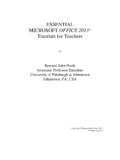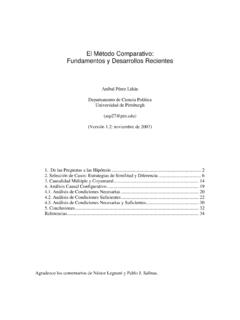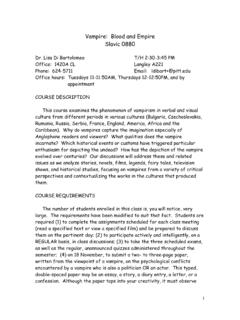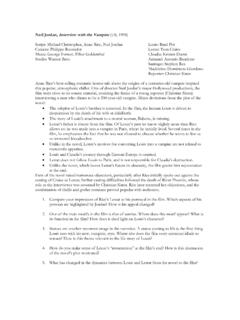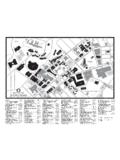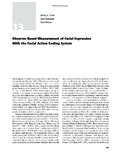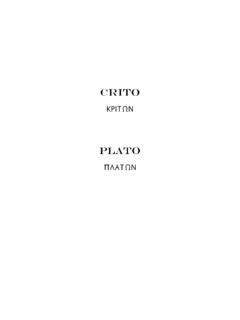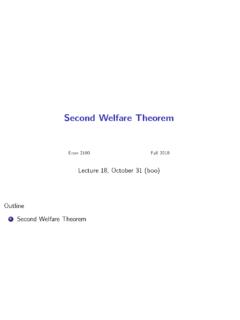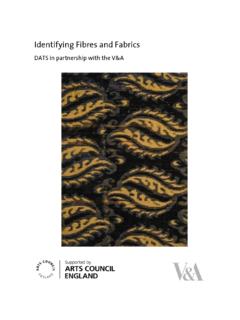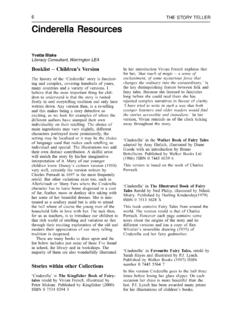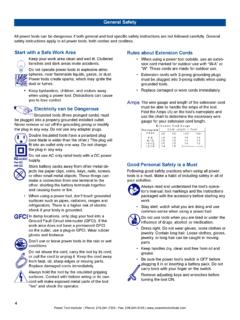Transcription of The Scientific Study of Bureaucracy: An Overview
1 The Scientific Study of bureaucracy : An Overview Kenneth J. Meier and George A. Krause The Foundations of the Scientific Study of Public bureaucracy The Study of bureaucracy is the analysis of how administrative agencies function as organizations within a governmental system. The Study in- cludes interinstitutional relationships with democratic institutions such as chief executives, legislatures, or the judiciary as well as intrainstitu- tional activities concerned with explaining the organizational structure and behavior of administrative agencies. Scienti c inquiry pertains to the development of systematic, generalizable explanations and subsequent empirical tests of the what, how, and why of bureaucratic agencies.
2 This book contains essays that emphasize theory building and empirical test- ing of theories, theories of interest to students of public administration within political science. Our primary concern is how public bureaucracies operate in a democracy. The Study of bureaucracy within political science has an intellectual history that harkens back over a century. German sociologist Max Weber's (1947) notion that maintaining a rational-legal authority was the ap- propriate way to conduct the business of governance was both a norma- tive and an empirical theory. He advocated the basis for general explana- tions regarding how bureaucratic institutions should be designed, including the need for a division of labor, career personnel with special- ized training and expertise, hierarchical formal organizational structures that do not duplicate other administrative units, and explicit rules and procedures to ensure clear lines of authority and accountability within the organization.
3 This work has had a profound impact on our theoretical un- derstanding of how superior-subordinate relationships within such or- 2 Politics, Policy, and Organizations ganizations actually play out ( , Barnard 1938; Brehm and Gates 1997;. Crozier 1964; Cyert and March 1963; Downs 1967; March and Simon 1958; Miller 1992; Simon 1947; Tullock 1965). Similarly, Woodrow Wilson's (1887) argument for an administrative ap- paratus that is devoid of politics and meddling arose from a normative concern of the era that American bureaucracy served as a bastion for political patronage (Nelson 1982; Skowronek 1982). Wilson's call for an independent administrative state not beholden to the particularistic in- terests of elected of cials re ects issues of theoretical interest in under- standing the role and functioning of bureaucracy within our American democracy that range from whether the bureaucracy responds to political control from electoral institutions ( , Moe 1982, 1985; Weingast and Moran 1983; Wood and Waterman 1994) to the importance of profes- sional expertise in policy administration (Eisner 1991; Khademian 1992.)
4 Mosher 1968). Goodnow, Taylor, and Gulick: The Progressive Era The early American Study of bureaucracy nds its roots in the work of Goodnow, Gulick, and Taylor rather than that of Weber and Wilson. The in uence of both Weber and Wilson, substantial as it was, came late to scholars of administration. Weber was not translated into English until 1946 (Weber 1946, 1947) and therefore his work was relatively in- accessible. Similarly, Wilson's original essay disappeared from the litera- ture until it was republished in 1941 (Van Riper 1983). Goodnow (1900) also proposed a politics-administration dichotomy;. he considered these to be two different functions but recognized that in practice politics was rarely separate from administration.
5 This distinction became part of the progressive philosophy in public service training and was incorporated in the eld's rst textbook (White 1926). The functional division allowed progress on two dimensions. On the administrative side, efforts were made to Study implementation and the processes of bureau- cracy in a scienti c manner. On the political side, the focus was on de- signing governmental institutions, that is, creating the institutions that would formulate, adopt, and implement policy. The latter was inherently prescriptive. This effort (known as the Study of the separation of powers). continued to occupy the time of public administration scholars until the 1950s (Waldo 1984, chap.)
6 7; Appleby 1949).1. On the administrative side, efforts were made to discover the prin- The Scientific Study of bureaucracy 3. ciples of administration, the one best way to design a work process or structure an organization. Work process design is most closely associated with the work of Fredrick W. Taylor (1919), who used experiments to de- termine how jobs should be structured. Taylor advocated a division of tasks with management charged with designing the optimal work pro- cesses and individual workers charged with responding based on the in- centives offered for production. Taylor's controversial motivation theory, the reliance on piecework and pure economic incentives, drew attention away from his scienti c, albeit atheoretical, approach and generated skep- ticism (including a congressional investigation) about the contribution of Taylor (see Henry 1995, 55 56).
7 Taylor's experimental approach also generated the rst empirical chal- lenge to this type of inquiry with Western Electric's Hawthorne experi- ments. Those experiments demonstrated how human factors and rela- tionships subverted material incentives (see Roethlisberger and Dickson 1939). Although scholars of public administration paid little attention to this work after the Hawthorne experiments, the elds of industrial engi- neering and operations research continue within the tradition of Taylor and the Hawthorne experiments. A second stream of work went beyond production processes to exam- ine how to structure organizations such as specialization, span of control, unity of command, and similar factors (Gulick and Urwick 1937; Fayole 1949).
8 The method of analysis was observation rather than systematic data collection and analysis (for an early attempt at formal theory, see Stene 1940). Despite an impressive set of principles, Gulick (1937) him- self lamented the lack of research supporting the principles and sketched out a research design to determine how one of them, span of control, could be systematically veri ed. That research agenda remained un- touched, however. Simon's (1947) devastating critique of the proverbs of administration effectively ended this approach to the science of admin- istration within public The work of Progressive Era scholars arguing for a scienti c approach to administration gave way to the behavioral revolution in the Study of or- ganizations.
9 The intellectual roots of this revolution can be traced to Barnard's (1938) The Functions of the Executive, in which issues of author- ity relating to superior-subordinate relationships were analyzed. Central to Barnard's argument are joint issues: (1) what motivates bureaucrats to be- have as they do? and (2) why are they willing to sacri ce their individual 4 Politics, Policy, and Organizations goals and belong to an organization? This line of inquiry sought to de- velop generalizable theoretical principles to facilitate our understanding of how administrative agencies make decisions rather than emphasizing nor- mative descriptions as to how administrative agencies should function as entities in their own right and within a larger governmental system.
10 Simon's (1947) classic Administrative Behavior focused on individuals as the key unit of analysis in order to understand how organizations per- form. The two major cornerstones of this work were an emphasis on (1). providing a theory of administration centered on ef ciency and (2) an- alyzing the nature of information processing by bureaucratic organiza- tions by asserting that individuals' cognitive limitations did not allow for rational-comprehensive decision making. The latter subject is devel- oped in March and Simon's (1958) Organizations, in which the rational- comprehensive method is shown to be empirically unrealistic and theo- retically ungrounded.
